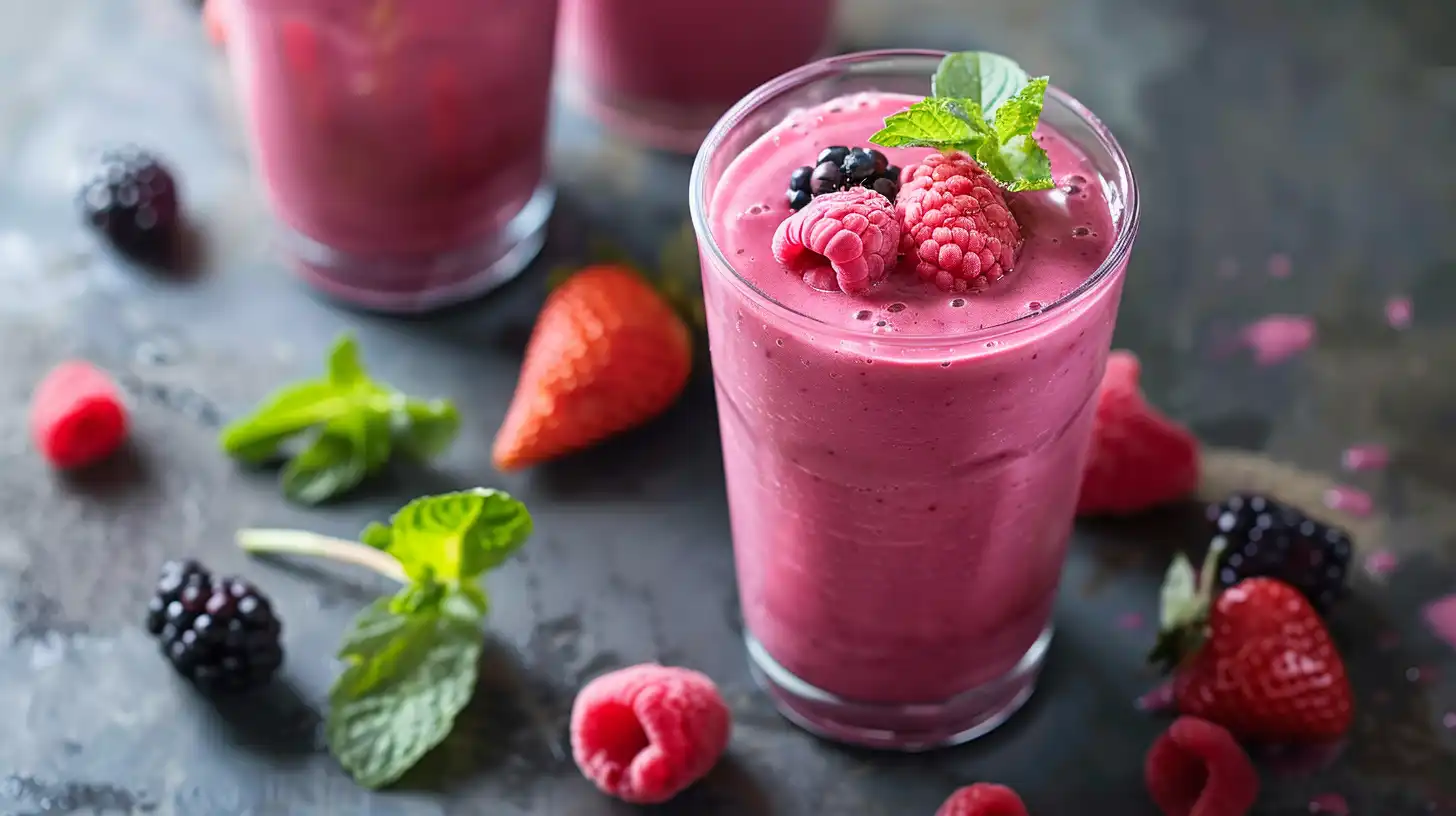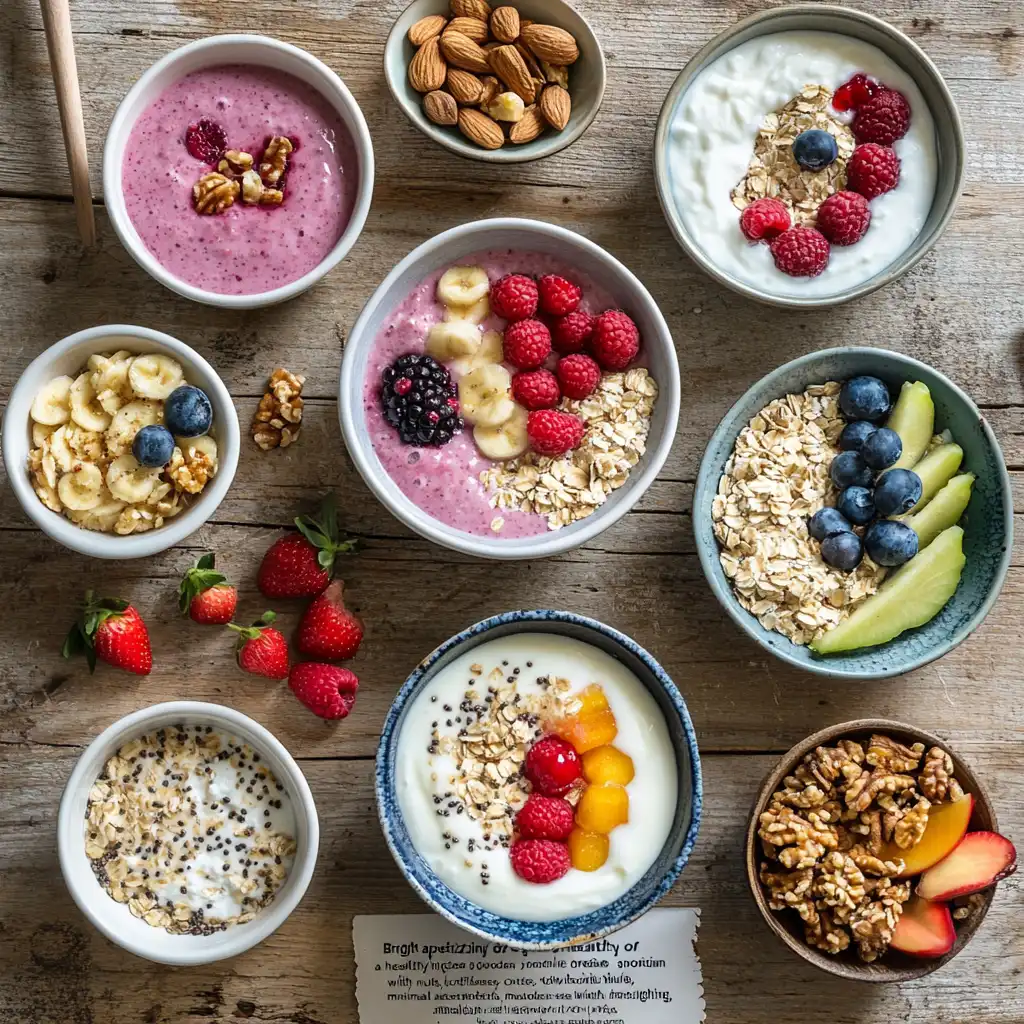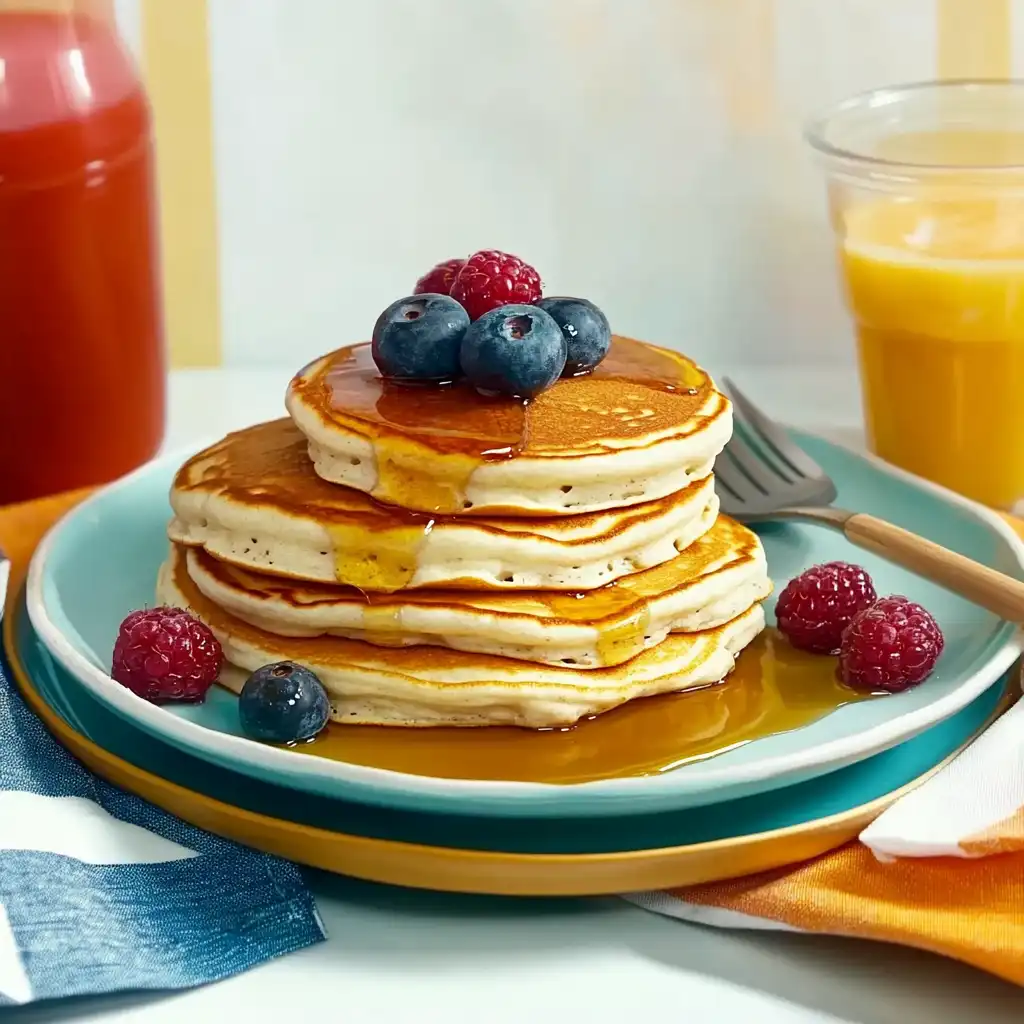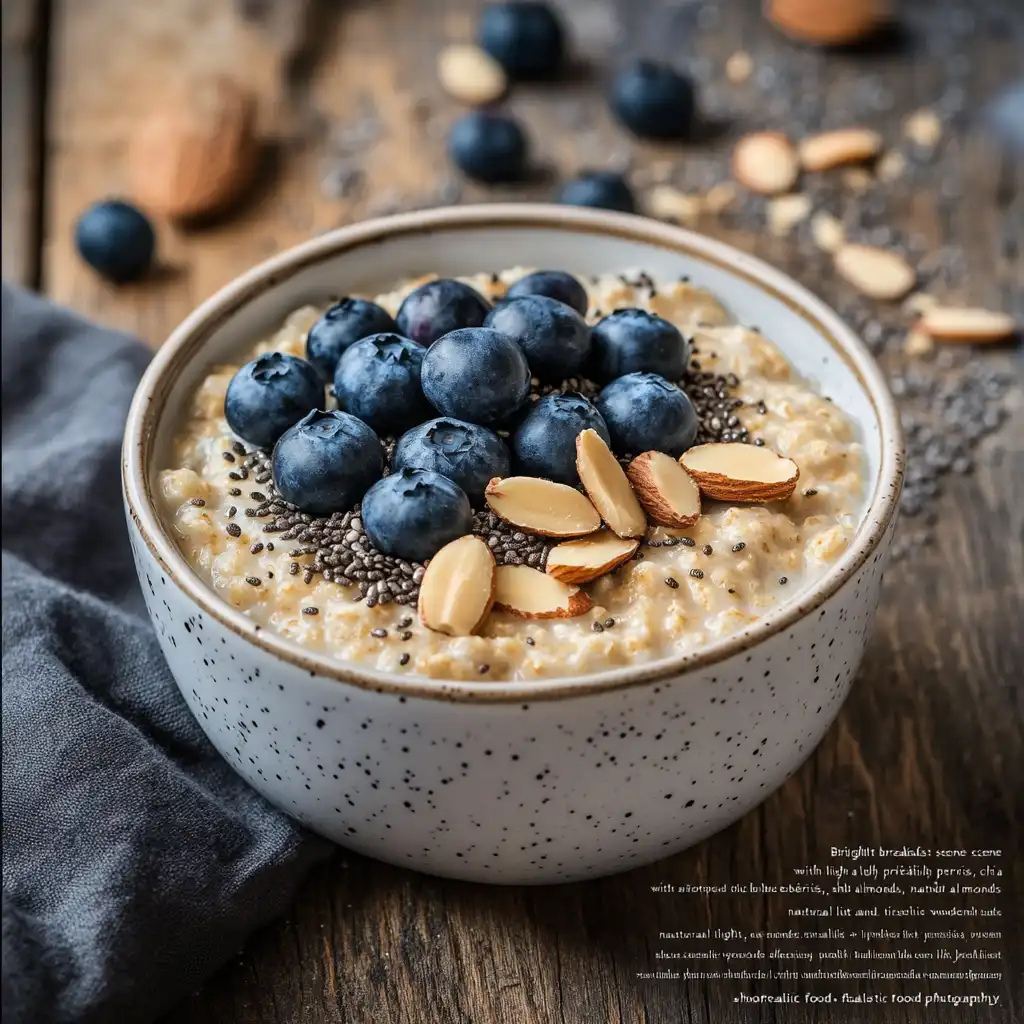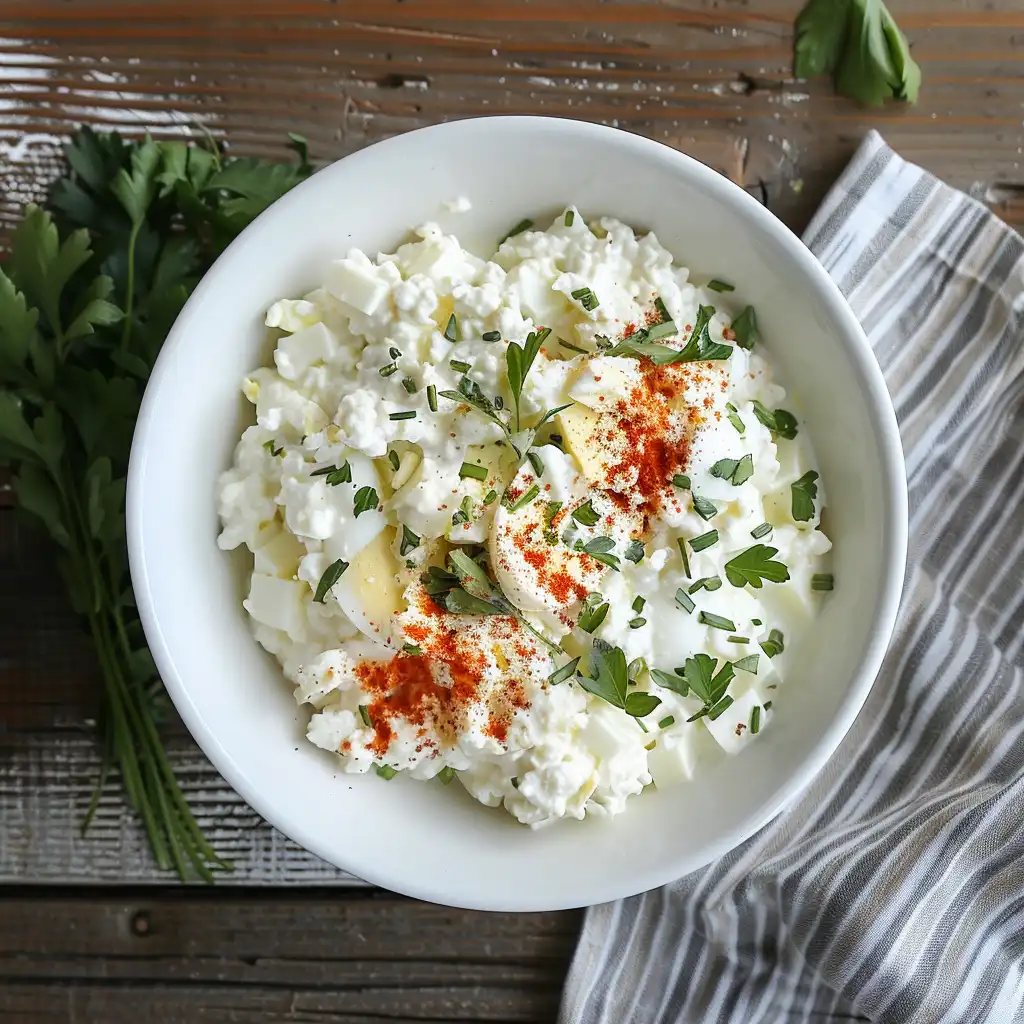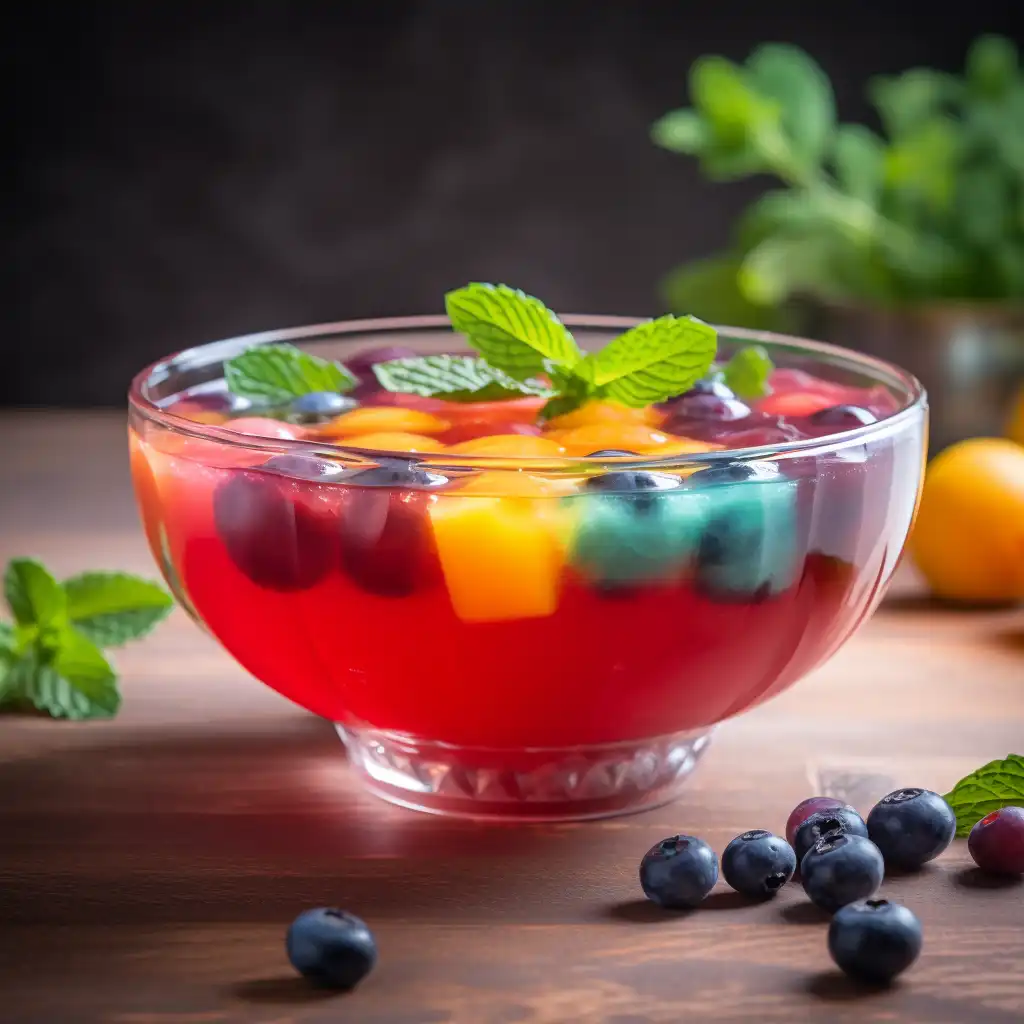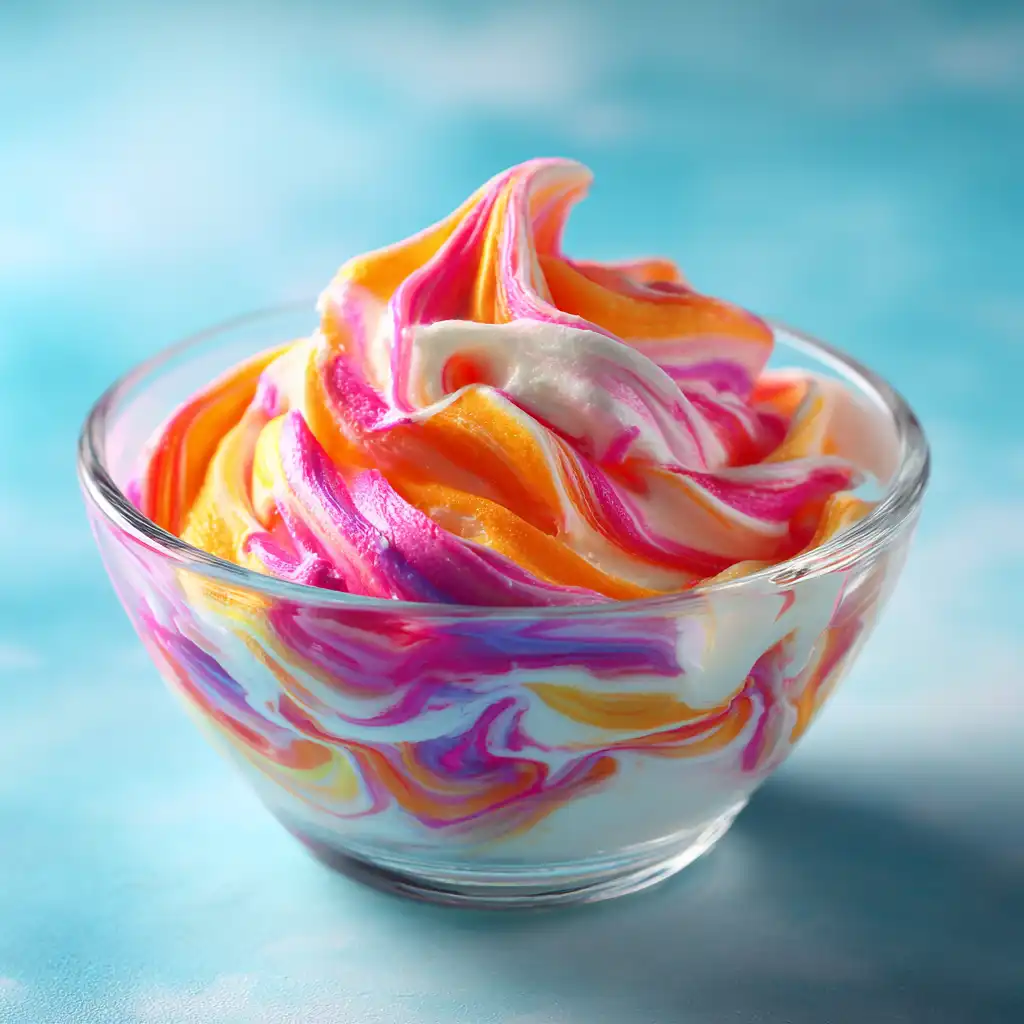Did you know a breakfast smoothie with 20–30 grams of protein can keep you full for hours? Whether you’re commuting, managing kids, or training early, high protein smoothie recipes deliver fast, portable nutrition without the sugar crash.
Research links higher-protein breakfasts with better satiety and weight management. For deeper guidance on protein quality and daily targets, see Harvard T.H. Chan School of Public Health.
- Why High Protein Smoothies Work
- Core Ingredients
- 10 High-Protein Smoothie Recipes
- Customize Without Protein Powder
- Timing, Portions & Prep
- Troubleshooting
- FAQ
- Conclusion
Why High Protein Smoothies Work for Busy Mornings
Protein drives fullness via satiety hormones and slows digestion for steadier energy. That’s why a balanced smoothie keeps you focused until lunch. Smoothies are also time-smart: blend in under 5 minutes, pour, go no pans, no mess.
A practical target is 20–30 g protein per serving for most adults; strength athletes may prefer 30–40 g. Hit the range using dairy or plant bases, then add seeds or nuts for extra grams.
Summary: Protein boosts satiety and performance while smoothies save time perfect for busy schedules.
Core Ingredients for High-Protein Smoothies
Dairy & Plant Milks
- Greek yogurt: ~10–20 g per ¾–1 cup, ultra-creamy base.
- Kefir: ~8 g per cup + probiotics for gut comfort.
- Soy or pea milk: ~7–10 g per cup, great for dairy-free protein.
Whole-Food Protein Boosters
- Silken tofu: ~7 g per 100 g, neutral taste and silky texture.
- Hemp hearts: ~10 g per 3 tbsp; also add omega-3s.
- Nut/seed butters: 4–7 g per 2 tbsp; add richness and minerals.
- Chia/flax: fiber + healthy fats for satiety.
Flavor, Greens & Liquids
Use frozen fruit for thickness, spinach/kale for micronutrients, and liquids (milk, soy milk, or water) to control consistency. Blend liquids first, then powders/soft items, finish with frozen fruit for the smoothest texture.
| Protein Source | Approx. Protein / Serving | Best Use |
|---|---|---|
| Greek yogurt (¾–1 cup) | 10–20 g | Creamy base, tangy flavor |
| Soy/pea milk (1 cup) | 7–10 g | Light base, dairy-free |
| Silken tofu (100 g) | ~7 g | Ultra-smooth texture |
| Hemp hearts (3 tbsp) | ~10 g | Nutty boost, sprinkle in |
| Peanut/Almond butter (2 tbsp) | 6–7 g | Richness & minerals |
Summary: Build from a protein-rich base, then layer whole-food boosters for taste and texture.

10 High Protein Smoothie Recipes for Busy Mornings
Each makes 1 serving and lands near 20–30 g protein depending on your milk/yogurt choice.

1) Classic Banana-Nut Power Shake
- 1 frozen banana
- 1 cup milk (or soy/pea milk)
- ½ cup Greek yogurt
- 2 tbsp peanut butter
- 1 tbsp chia seeds
Why it works: Carbs + healthy fats + protein = long, even energy.
2) Berry-Greek Yogurt Protein Blend
- 1 cup frozen mixed berries
- ¾ cup Greek yogurt
- ½ cup kefir
- 1 tbsp hemp hearts
- ½ tsp vanilla
Why it works: Antioxidants and probiotics with a strong protein backbone.
3) Chocolate-Peanut Butter Smoothie
- 1 cup milk
- 1 tbsp cocoa powder
- 2 tbsp peanut butter
- ½ frozen banana
- Optional: 1 scoop chocolate protein powder
Why it works: Dessert vibes, breakfast macros.
4) Green Protein Superfood Smoothie
- 1 cup spinach
- 1 cup soy/pea milk
- ½ avocado
- ½ cup silken tofu
- ½ cup pineapple chunks
Why it works: Creamy, micronutrient-dense, naturally sweet.
5) Tropical Mango-Coconut Smoothie
- 1 cup frozen mango
- 1 cup coconut water
- ¾ cup Greek yogurt
- 1 tbsp chia seeds
Why it works: Hydrating electrolytes meet protein richness.
6) Oat & Berry Breakfast Smoothie
- ½ cup cooked oats (cooled)
- 1 cup milk
- ½ cup mixed berries
- ½ cup Greek yogurt
- 1 tbsp ground flaxseed
Why it works: Fiber + protein for staying power. For variety, prep high-protein overnight oats for another grab-and-go option.
7) Avocado & Almond Butter Smoothie
- ½ avocado
- 1 cup soy milk
- 2 tbsp almond butter
- 1 tsp honey (optional)
- Pinch sea salt
Why it works: Silky texture, satisfying fats, steady energy.
8) Chocolate-Cherry Recovery Smoothie
- 1 cup milk
- 1 cup frozen cherries
- ½ cup Greek yogurt
- 1 tbsp cocoa powder
Why it works: Post-workout flavors that support muscle repair.
9) Chia-Seed Protein Smoothie
- 1 tbsp chia seeds (soaked 10 min)
- 1 banana
- 1 cup milk
- ½ cup yogurt
- Dash cinnamon
Why it works: Fiber + omega-3s extend satiety.
10) Coffee + Protein Kick Smoothie
- 1 cup chilled coffee
- ½ cup milk
- ½ frozen banana
- ½ cup silken tofu or Greek yogurt
- Dash cocoa powder
Why it works: Caffeine plus protein for focused mornings.
Summary: Choose a protein-rich base, add whole-food boosters, and balance flavors for 10 fast, filling options.

Customize Without Protein Powder
Prefer homemade protein shakes with whole foods? Use Greek yogurt or silken tofu as creamy anchors, then layer hemp hearts or nut butters. For extra grams without strong flavors, blend in ¼–⅓ cup cooked white beans or lentils surprisingly smooth.
For fat-loss goals, focus on protein smoothies for weight loss: unsweetened liquids, berries over tropical fruit, and fiber (chia/oats) to curb hunger. When you want solid food alternatives, try our high-protein breakfast burrito or protein muffins.
Summary: Whole-food proteins make powder optional; smart swaps keep calories in check.
Timing, Portions & Prep
- To get the most from your high protein smoothie recipes and homemade protein shakes, follow these simple best practices:
- When: Drink at breakfast or within 30 minutes post-workout to maximize muscle recovery and satiety.
- Portion: Aim for ~350–450 ml (12–15 oz) per serving to balance fullness, calories, and macro ratios.
- Prep: Freeze fruit and pre-portion dry add-ins. In the morning, simply add liquid and blend for a quick, no-stress meal.
- These tips ensure your smoothies stay consistent, convenient, and nutritionally balanced even on the busiest mornings.
For more morning ideas, see our curated high-protein breakfast recipes.
Summary: Smart timing and batching make consistency effortless.
Troubleshooting
- Even the best high protein smoothie recipes can have issues here’s how to fix them and keep your protein smoothies for weight loss satisfying and effective:
- Too watery? Reduce the liquid, add frozen fruit, or blend in ¼ avocado for a creamier, thicker texture.
- Gritty or chalky? Blend powders with a splash of liquid first and use finer grinds for a smoother finish.
- Bloating? Ease into high-fiber ingredients, try kefir for probiotics, and blend longer to break down fibers.
- Flavor fatigue? Rotate fruits, experiment with spices like cinnamon or ginger, or add citrus zest to refresh your taste buds.
- These quick fixes help you enjoy every sip while staying consistent with your nutrition goals.
Summary: Texture, digestion, and taste improve with small tweaks.
FAQ
What can you put in a smoothie for high protein?
For the best high protein smoothie recipes, focus on whole-food protein sources rather than relying only on powders. Use Greek yogurt, kefir, soy or pea milk, silken tofu, hemp or chia seeds, nut butters, and even cooked beans or lentils. These ingredients not only boost protein but also create a creamier, more satisfying blend perfect for protein smoothies for weight loss because they keep you fuller for longer and reduce the temptation to snack.
Is drinking a protein shake every day ok?
Drinking high protein smoothie recipes or homemade protein shakes every day is perfectly fine as long as it fits your daily protein and calorie goals and uses nutrient-dense ingredients. Keep added sugars to a minimum, rotate protein sources like Greek yogurt, silken tofu, or hemp hearts, and pair your shake with whole foods to cover vitamins, minerals, and fiber for a balanced diet.
How to make protein smoothies without protein powder?
If you prefer high protein smoothie recipes without powders, focus on whole-food sources. Blend Greek yogurt, silken tofu, hemp hearts, chia, nut butters, or ¼–⅓ cup cooked beans to naturally raise protein content. This approach lets you create homemade protein shakes that are clean, customizable, and nutrient-dense. Combine a protein-rich base with fiber and healthy fats to consistently hit 20–30 g per serving and stay full for hours.
What to put in a protein shake for weight loss?
Use low-calorie liquids (water or unsweetened milk), lean proteins (yogurt or tofu), fiber (oats, chia), and low-sugar fruits (berries). Skip syrups and sweet sauces; flavor with vanilla, cinnamon, or cocoa instead.

Conclusion
Conclusion
These 10 high protein smoothie recipes prove that healthy eating can be simple, delicious, and incredibly fast. Each blend is designed to give you balanced fuel protein for satiety and muscle repair, healthy fats for steady energy, and just enough carbs for focus.
To keep breakfast exciting, rotate flavors throughout the week, switch up your protein sources (Greek yogurt one day, tofu the next), and experiment with seasonal fruits and superfoods. Batch your ingredients in freezer bags or jars so that mornings become effortless just blend and go.
The beauty of smoothies is their flexibility: you can tailor texture, sweetness, and nutrition to meet your exact needs—whether that’s weight loss, post-workout recovery, or simply staying full until lunch.
Start tomorrow with one of these recipes, then create your own signature blends by mixing and matching ingredients from this guide. Over time, you’ll build a routine that saves time, supports your health goals, and keeps your mornings stress-free.
Try one recipe this week, share your favorite combination in the comments, and inspire others to power their mornings with nutrient-packed smoothies!
